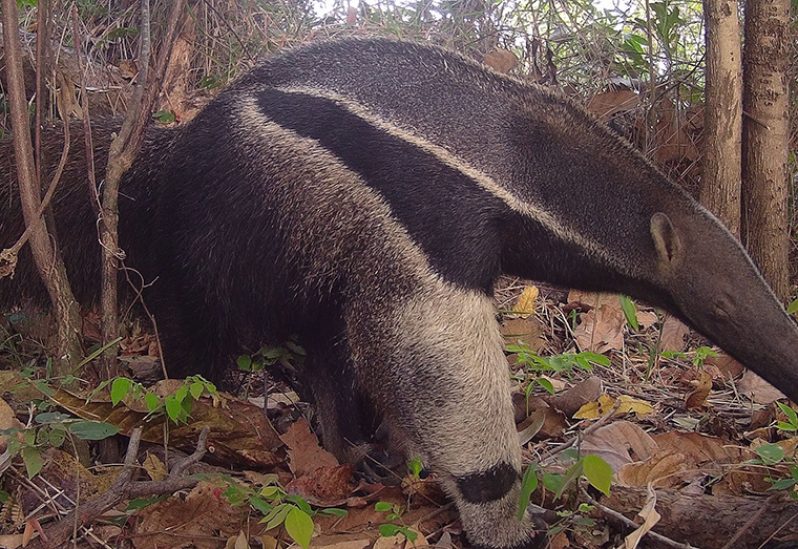By Telesha Ramnarine
IN a bid to preserve Guyana’s unique and fascinating wildlife, the South Rupununi Conservation Society (SRCS) has been doing a lot of work to conduct extensive research that can help to protect threatened species in the Rupununi.
With its population said to be decreasing in South America and its conservation status listed as vulnerable, the situation with the giant anteaters in Guyana formed the basis for one such research that the SRCS has begun undertaking.

Based in Region Nine (Upper Takutu/Upper Essequibo), the SRCS was formed in 2002 and was initially focused on the endangered ‘red siskins,’ but as the organisation grew, it started making efforts to protect other threatened wildlife species in the Rupununi, including the Giant Anteater and the Yellow-spotted river turtle.
Over the past two decades, residents of the Rupununi have observed a notable decline in Giant Anteaters, and while the members of the SRCS had their opinions about why this might be, they could not draw definitive conclusions.
Before they started their research, there was no data on the Giant Anteaters — no information about what people thought of them, where to find them, if they were being viewed as a threat and so forth.
It is for this reason that in August 2019, the SRCS was happy to be funded by the Sustainable Wildlife Management Programme Guyana for four years, to monitor and research the animals. To start with, the group piloted the project in Katoonarib Village, under the leadership of Project Coordinator Erin Earl.
The first thing that the SRCS did was to conduct surveys with villagers from 25 households to find out, among other things, if they had any indigenous, traditional, local knowledge about the animals.

The SRCS soon found out that the anteaters’ habitat was being destroyed when people created farms and lit wildfires. “You see these fires every single time you drive through the Rupununi….and it’s not unusual to find a dead Giant Anteater that has been burnt in the savannah,” Giant anteater Programme Coordinator Neal Millar said.
Others, according to him, have engaged in “opportunistic killing” of the animals, killing them because of superstition or simply because they can. Armed with this knowledge, the next step of the research project was to plant camera traps on trees and in locations where the anteaters were likely to show up.
The team managed to set up about 15 camera traps around Katoonarib Village and over a year, they were able to capture a lot of footage. Because the Giant Anteaters each have distinctive features, such as different markings on their bodies, the team was able to complete the population estimate for that area and in the space of 18 months, some 33 Giant Anteaters were identified.
According to Millar, researching the animals included going out on horseback and following them from a distance to be able to stock up on more scientific information. One of the things they discovered is that the animals love to climb trees.

“Everyone across the Rupununi assumed it was jaguars when they saw huge scratch marks on trees, but now we know that it could’ve been the anteaters, because our research shows that they love to climb trees,” Millar disclosed.
The final stage of the research is what they’re doing now — setting up a safe zone in the village. “So we will work with the villagers to create certain rules and help them to know what they should and should not do. For example, no one is allowed to kill them, keep them as a pet, destroy their habitat, and light a fire in certain places, so that we can further protect the population.”

The SRCS has been granted two years of additional funding from the Small Grants Programme Guyana to expand the project to three more communities, namely Shulinab Village, Wariwau Outstation, and Sawariwau Village.
The SRCS uses the funding to pay the local rangers stipends and in some cases, hire them fulltime. The team has also recently released several short documentaries called the “Secret Life of Giant Anteaters” and each episode focuses on different aspects of the work being done. Two more episodes are expected to be released this month.
The team also does a lot of awareness work, including environmental education. They have another project for which they have designed an environmental education curriculum that has so far been implemented in four schools in the Rupununi and come this September, depending on the coronavirus pandemic, will be implemented to 12 other schools.
“The wildlife is there. Guyana is so fortunate to have this rich biodiversity and we really shouldn’t spoil it, but take care of it,” expressed Millar.




.png)









